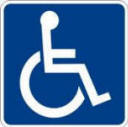CIDP TIPS
Hello!
Dr. Engle recommended her getting a knee brace that has a tension against bending
and kind of assists the leg extension. It makes perfect sense and he has helped patients with some success. The idea is to make the knee "think" about starting to bend and avoid the whole event.
CIDP TIPS BY EARL patient of DR Engle
My wife has both CIDP and PM, and possibly IBM, all diagnosed by Dr Engle. She was several years getting the referral to Dr Engle with local doctors
doing the "patting the hand" routine, so by then she was well into it and had fallen a few times from quadricep weakness. Dr Engle put her on IVIG which brought
her back about 50%. Now, after a couple years at 50% she has been slipping downward and walks with a cane and sometimes walker. She is VERY susceptible to
falls with right knee bending and no strength to stop it, which brings me up to my question.
I may be wrong in my few short visits here(cidpusa.org), but I perceive the focus
of the site is toward the disease itself and less on tips (and devices) to live with it. How do people get through their day, I mean open jars, lift the milk jug, turn around without falling, get in and out of the bath, wash their hair, etc. Now that my wife has lost most strength in her hands it's not just standing up anymore. She has a terrific attitude and has invented
ways to get by, but we all need a tip now and then. Here's a few things she has done:
Apply for a disability plate so you can park closer to
shops.

Use a walker so you can support some weight on the walker and leg muscles get some relief.
If you cannot use a walker then many stores offer motorized carts for disabled shoppers.
You can find them in Target and Wal-Mart.
* Put a 2" seat cushion in her car to help getting out (A patio chair cushion from Target).
For most people with adequate strength and function, it's much easier to get up from the chair illustrated here or an easy chair, because the body movements needed to do so are much easier on the joints and muscles the arm rests help you get out of the chair easily. Keep a bigger cushion so you can get up easily.
Place cushions on chairs and low seats so you can get around easily.
You can also use a extra cushion on your chair or sofa and it will be easier to get up
Dr Engle
Please
continue to next page of CIDP TIPS by Earl
CMT